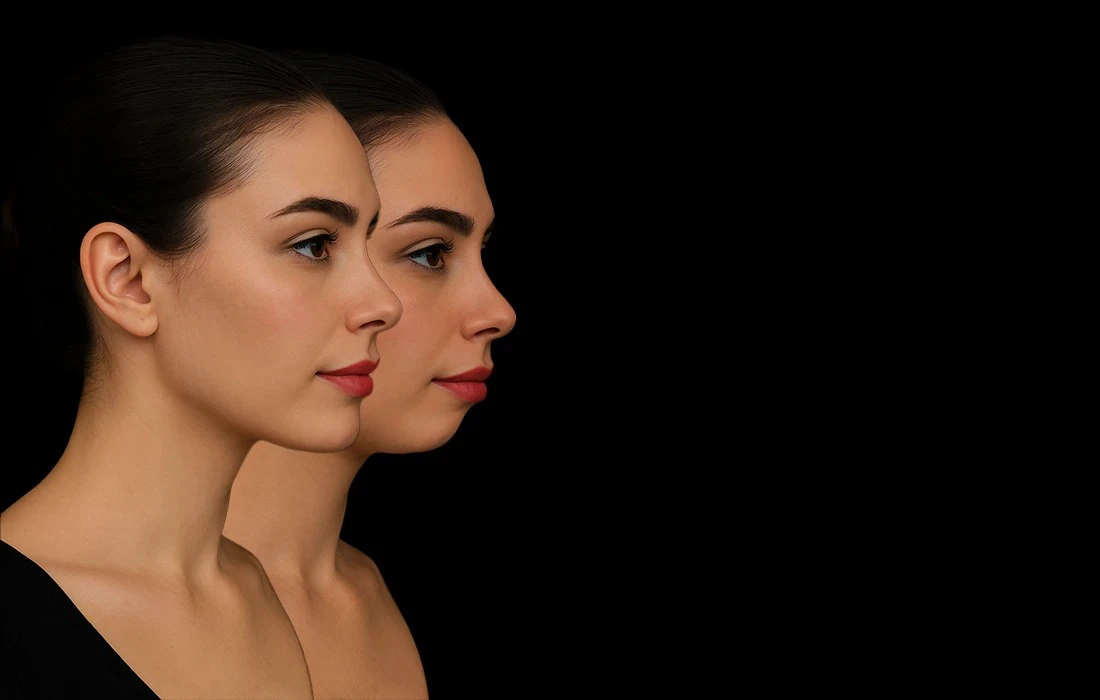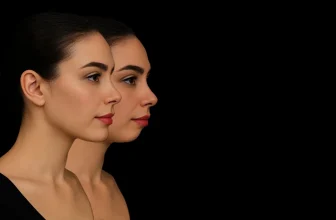Chin Surgery: Chin Implant vs Sliding Genioplasty

Chin Surgery : Chin Implant vs Sliding Genioplasty
The chin is one of the most prominent areas in facial aesthetics. A receding or underdeveloped chin can affect not only the profile but also the overall balance of the face. Just as the shape of the eyes can make someone look tired or energetic, the harmony of the chin with the rest of the facial features can also influence a person’s social image. For patients considering chin surgery, there are two main options: chin implant (alloplastic genioplasty) and sliding genioplasty (osseous genioplasty / sliding osteotomy of the chin).
Chin Implant (Alloplastic Genioplasty)
In chin surgery with implants, silicone, Medpor, or titanium-based implants are placed on the front part of the mandible (lower jaw bone), also known as the chin. Let’s briefly introduce these materials first:
- Medpor is a porous biomaterial that allows surrounding tissues to integrate into its structure.
- Titanium implants are biocompatible, durable, and relatively lightweight metals that provide long-term stability.
Advantages
- Shorter surgical time
- Faster recovery in most cases
- Reversible procedure, as the implant can be removed
Disadvantages
- When performed by a non-expert surgeon, the implant may shift or lead to undesired results
- May not be sufficient in cases of severe chin deficiency
Sliding Genioplasty (Osseous Genioplasty / Sliding Osteotomy of the Chin)
In this technique, the front portion of the mandible is surgically cut, repositioned (forward, backward, upward, downward, or sideways), and fixed with titanium plates and screws.
Advantages
- Uses the patient’s own bone, providing a natural and permanent result
- Allows both horizontal and vertical adjustments
- Can correct asymmetries
- No foreign material is left in the body
Disadvantages
- Longer surgery and recovery time
- Swelling and numbness may be more pronounced in the early healing phase
- Less easily reversible compared to implants
What If There Is Not Enough Chin Bone?
Sliding genioplasty requires adequate volume and thickness of the mandible. If the chin is too small or thin, the amount of advancement that can be achieved is limited. In such cases:
- The amount of sliding is restricted,
- Bone grafts can be added,
- A combination of sliding genioplasty and an implant may be performed,
- Or an implant alone may be preferred.
For a more clinical and comprehensive overview of both implant-based and osseous chin augmentation techniques, you might refer to the StatPearls article Facial Chin Augmentation.
Thus, detailed imaging of the mandible (such as CT scan) is necessary to determine the most suitable approach.
Conclusion
For patients with mild to moderate chin deficiency, implants (alloplastic genioplasty) can be a practical solution. For more significant deficiencies, vertical dimension problems, or asymmetry, sliding genioplasty (osseous genioplasty) provides more natural and permanent results. However, the best technique for each patient should be decided after a thorough examination and imaging. Your surgeon will evaluate your face both aesthetically and anatomically to recommend the most suitable option for you. If you are considering chin surgery, consulting with a qualified specialist is the safest way to achieve balanced and natural results. Choosing the right type of chin surgery can make a significant difference in both facial harmony and self-confidence. For any questions related to this procedure, please feel free to contact us.







